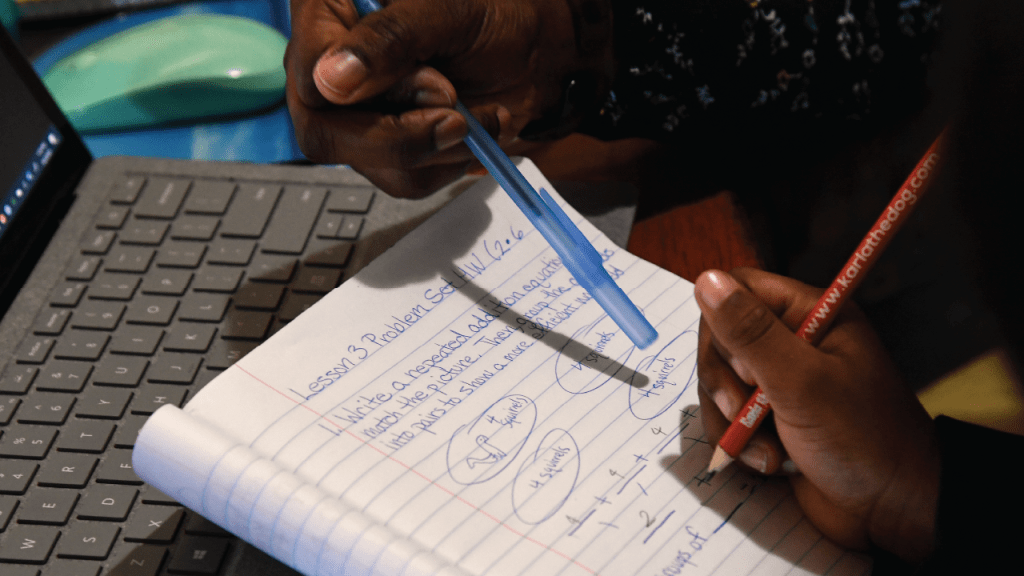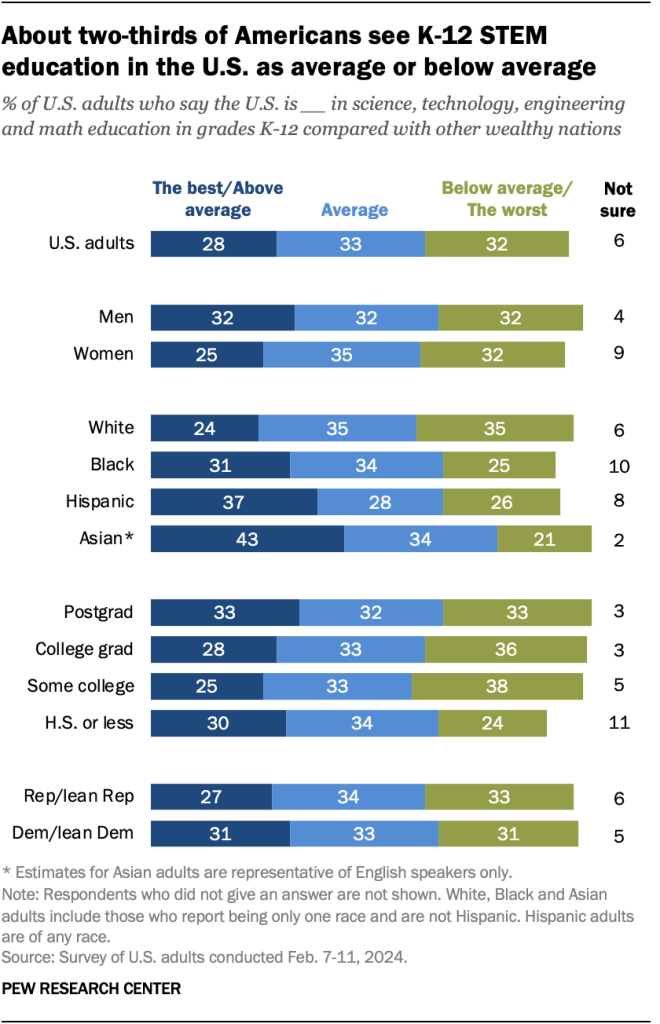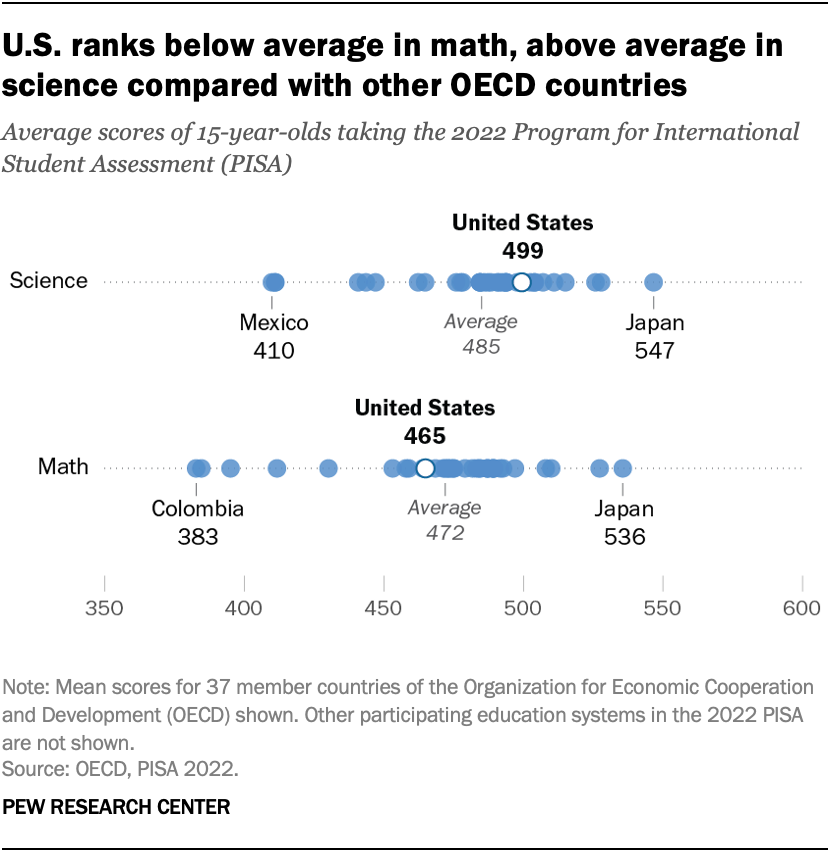
Most Americans believe K-12 STEM education in the United States is either average or below average compared with other wealthy nations, according to a new Pew Research Center survey.
Recent global standardized test scores show that students in the U.S. are, in fact, lagging behind their peers in other wealthy nations when it comes to math. But America’s students are doing better than average in science compared with pupils in these other countries.
Pew Research Center conducted this study to understand Americans’ ratings of K-12 STEM education in the United States. For this analysis, we surveyed 10,133 U.S. adults from Feb. 7 to 11, 2024.
Everyone who took part in the survey is a member of the Center’s American Trends Panel (ATP), an online survey panel that is recruited through national, random sampling of residential addresses. This way, nearly all U.S. adults have a chance of selection. The survey is weighted to be representative of the U.S. adult population by gender, race, ethnicity, partisan affiliation, education and other categories. Read more about the ATP’s methodology.
Here are the questions used for this analysis, along with responses, and its methodology.
We also analyzed the latest data from the Program for International Student Assessment (PISA), which tests 15-year-old students in math, reading and science in member and partner countries of the Organization for Economic Cooperation and Development (OECD). This analysis only includes scores from students in the 37 OECD countries that took the 2022 PISA.
How do Americans think U.S. STEM education compares with other wealthy countries?

Just 28% of U.S. adults say America is the best in the world or above average in K-12 science, technology, engineering and math education compared with other wealthy nations. A third say the U.S. is average, while another 32% think the U.S. is below average or the worst in K-12 STEM education.
Some demographic groups are more pessimistic than others about the state of U.S. STEM education. White Americans (24%) are less likely than Black (31%), Hispanic (37%) or English-speaking Asian (43%) Americans to say U.S. K-12 STEM education is the best in the world or above average. And fewer women (25%) than men (32%) say K-12 STEM education is at least above average.
Republicans and Democrats give similar ratings to K-12 STEM education: 31% of Democrats and Democratic-leaning independents say it is at least above average, as do 27% of Republicans and GOP leaners.
Americans’ views today are similar to those in a 2019 telephone survey by the Center, which was conducted before the coronavirus pandemic caused major disruptions in the country’s schools. In that survey, 31% of Americans said U.S. K-12 STEM education is the best in the world or above average compared with other nations.
How does the U.S. compare with other countries in STEM test scores?

The latest figures from the Program for International Student Assessment (PISA) show a mixed picture in U.S. math and science scores.
As of 2022, the U.S. was below average in math but above average in science compared with other member countries in the Organization for Economic Cooperation and Development (OECD), a group of mostly highly developed, democratic nations:
- U.S. students ranked 28th out of 37 OECD member countries in math. Among OECD countries, Japanese students had the highest math scores and Colombian students scored lowest. The U.S. ranking was similar in 2018, the last time the test was administered. The U.S. average score for math fell by 13 percentage points between 2018 and 2022, but the U.S. was far from alone in experiencing a decline in scores. In fact, 25 of the 37 OECD countries saw at least a 10-point drop in average math scores from 2018 to 2022.
- In science, the U.S. ranked 12th out of 37 OECD countries. Japanese students ranked highest and Mexican students ranked lowest. The U.S average science score was virtually unchanged since 2018. Across OECD countries, far fewer countries experienced a large decline in science scores than in math scores. Seven OECD countries saw their mean science scores decline by 10 points or more.
PISA is taken by 15-year-old students about every three years. Students in 37 OECD countries took the 2022 PISA.
Note: Here are the questions used for this analysis, along with responses, and its methodology.
